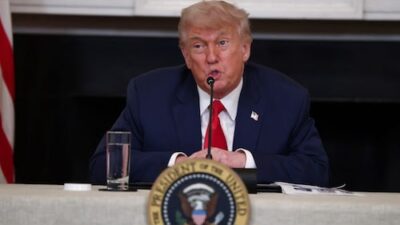Analysts had anticipated 244,000 new claims. A week earlier, there were 248,000 jobless claims, marking the highest figure since early October and suggesting a potential upward trend in layoffs.
Weekly jobless benefit applications are seen as indicative of U.S. layoffs and have largely fluctuated within a historically healthy range of 200,000 to 250,000 since the COVID-19 pandemic significantly impacted the economy five years ago, resulting in millions of job losses. However, over the last three weeks, layoffs have approached the upper limit of this range, raising concerns among analysts.
Also Read: Muted US Producer Prices add to string of tame inflation reports
“There are early warning signs in the labour market,” remarked Heather Long, chief economist at Navy Federal Credit Union. “If layoffs escalate this summer, it will intensify fears of a recession and a downturn in consumer spending.”
In their latest earnings reports, many companies have either lowered their sales and profit forecasts for 2025 or opted not to provide guidance at all, frequently citing President Donald Trump’s unpredictable tariff announcements.
While Trump has paused or reduced many of his tariff threats, worries persist that a global economic slowdown induced by tariffs could undermine the strong U.S. labor market.
Federal Reserve Chair Jerome Powell noted that the possibility of both rising unemployment and inflation is high, creating a complex scenario for the central bank’s dual objectives of managing prices and maintaining low unemployment. Powell indicated that tariffs have negatively affected consumer and business sentiment.
Also Read: Muted US Producer Prices add to string of tame inflation reports
In early May, the Federal Reserve maintained its benchmark lending rate at 4.3% for the third consecutive meeting after implementing three cuts at the end of the previous year. Last week, the Labour Department revealed that U.S. employers slowed their hiring in May, yet still added a robust 139,000 jobs amid concerns over Trump’s trade wars.
In a separate report last week, Labour indicated that U.S. job openings unexpectedly increased in April, although other data hinted that Americans are feeling less optimistic about the job market.
The report highlighted a decline in the number of Americans quitting their jobs—a sign of confidence—while layoffs increased. Additionally, the government reported one available job for every unemployed person, down from two openings per jobless American as of December 2022, indicating that the job market has cooled since the hiring surge of 2021-2023.
Also Read: US President Donald Trump says he will set unilateral tariff rates within two weeks
The government estimates indicate that the U.S. economy contracted at a 0.2% annual rate in the first quarter of 2025, a minor improvement from its initial estimate. This slowdown was fueled by a spike in imports as U.S. companies sought to import foreign goods ahead of Trump’s substantial tariffs taking effect.
Trump aims to reshape the global economy by significantly raising import taxes to revitalize the U.S. manufacturing sector. He has also attempted to drastically reduce the federal workforce, but many of these cuts are facing challenges in the courts and Congress.



